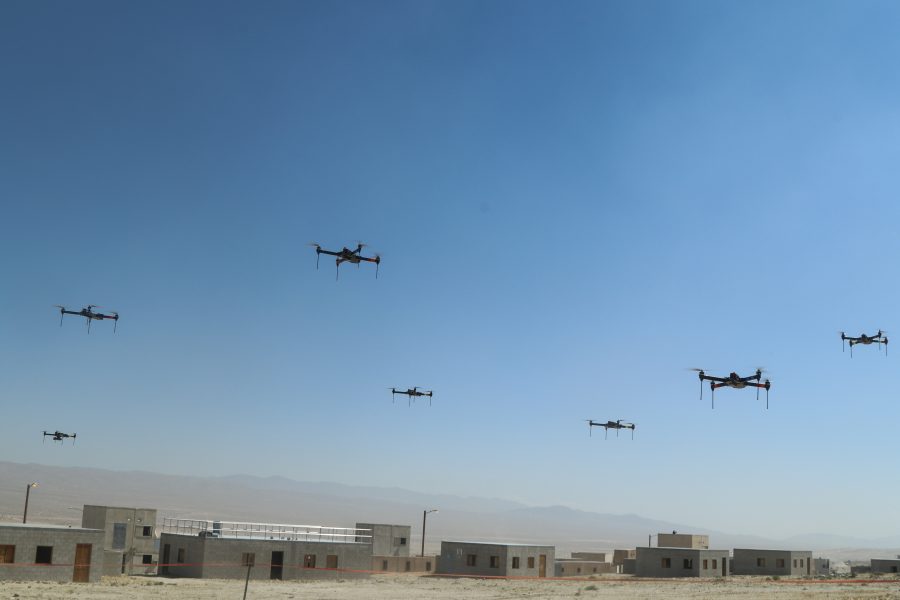Within the next two years, the Pentagon plans to field thousands of drones in the sea, in the air, and possibly on land to counter the large size of China’s military under its new Replicator Initiative. And the Department of Defense’s No. 2 official insists the DOD needs no new money to carry out that plan.
“Replicator is not a new program of record,” Deputy Secretary of Defense Kathleen Hicks, who is heading up the effort, said Sept. 6. “We’re not creating a new bureaucracy and we will not be asking for new money in [fiscal 2024]. Not all problems need new money.”
The goals for Replicator are extremely ambitious: “multiple thousands” of drones in “multiple domains” within the next 18-24 months. However, the Pentagon does not have a budget passed for the 2024 fiscal year, which begins at the start of next month.
But Hicks said the initiative was less about creating any particular new system than shifting the mindset of the entire Department of Defense to focus more on “small, smart, cheap, and many” systems that are “attritable” with a shelf life of a few years to field what is “most efficient, effective, and relevant.”
“This is about driving culture change just as much as technology change, and about replicating best practices just as much as products so we can gain military advantage faster,” Hicks said at a conference hosted by Defense News. “This doesn’t require a joint program office or re-shuffling deck chairs in any other way.”
The systems Hicks is referring to already have a Pentagon acronym, ADA2—“all-domain attritable autonomy.” The goal is “systems that are harder to plan for, harder to hit, and harder to beat than those of potential competitors.”
The Pentagon has a variety of unmanned systems, with varying degrees of autonomy, that it has sent to Ukraine, which uses thousands of drones, both of military and commercial origin. Some estimates put the loss rate of those systems at some 10,000 per month. That is where “many” and “attritable” parts of Replicator come into the picture. Russia’s invasion of Ukraine conflict has influenced the Pentagon’s thinking about the need for more and cheaper platforms.
“We’ve seen in Ukraine what low-cost attritable systems can do, not to mention other commercial technologies,” Hicks said. “They can help a determined defender stop a larger aggressor from achieving its objectives, put fewer people in the line of fire, and be made, fielded, and upgraded at the speed warfighters need without long maintenance tails.”
The People’s Republic of China, defined as the Pentagon’s “pacing challenge” by the National Defense Strategy, is bigger than Russia’s military, making the need more acute to “help us overcome the PRC’s advantage of mass—more ships, more missiles, more forces.”
But without new money or a new program of record, how the Pentagon will field the thousands of systems Hicks talks about remains somewhat nebulous. She said the effort looks to bring together much of what the Department of Defense is already doing under one roof, led by her, Vice Chairman of the Joint Chiefs of Staff Adm. Christopher Grady, and the director of the Defense Innovation Unit Doug Beck.
Hicks said what both the services and combatant commands are already doing informed the effort. The Space Force, led by the Space Development Agency, is shifting to smaller, profiled satellite architectures. In the Middle East, U.S. Central Command has several task forces focused on drones, led by the Navy’s Task Force 59, which uses commercial-origin vessels to patrol the waters of the region to assist the limited number of manned vessels at its disposal.
‘We’re now approaching a future where the web of satellites we can draw upon is so great that attacking or disrupting them would be futile—a wasted effort and a highly escalatory one at that,” Hicks said. “That’s what small, smart, cheap, and many can do, and Replicator will help us accelerate the scaling of ADA2 to systems in even more domains.”
While Hicks declined to talk about specifics systems, she did offer a preview of how future platforms might operate.
“Imagine flocks of ADA2 flying at all sorts of altitudes doing a range of missions,” Hicks said. “They could be deployed by larger aircraft, launched by troops on land or sea, or take off themselves. Bigger picture, ADA2 systems let us think and act differently.”
Whether the Pentagon can achieve what Replicator sets out to do remains to be seen.
“We are worried about proving … that the department can actually lead itself through this, not getting mired in red tape,” Hicks said.
The Replicator effort is seemingly separate from the Air Force’s Collaborative Combat Aircraft program to build unmanned wingmen for manned platforms—service officials have said CCAs will not be attritable, and budget documents suggest CCAs will be introduced operationally around 2030. The notional plan is to acquire at least 1,000 of those aircraft.
